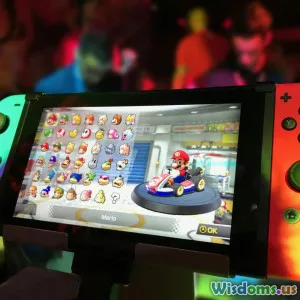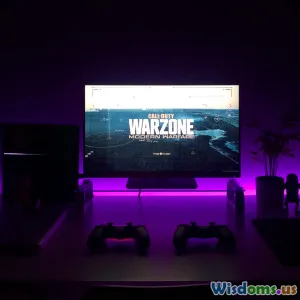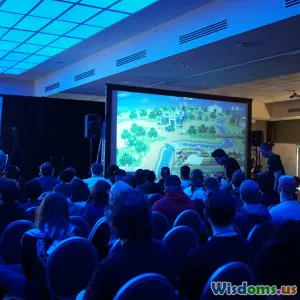
Nintendo Switch OLED Review Does the Screen Make a Difference
9 min read An in-depth Nintendo Switch OLED review exploring how its new screen impacts gameplay and user experience. (0 Reviews)
Nintendo Switch OLED Review: Does the Screen Make a Difference?
When Nintendo announced the Switch OLED model in 2021, anticipation stirred among gamers and tech enthusiasts alike. While the console’s internal specs remained largely similar to the original Switch, the headline change was clear: a new 7-inch OLED screen designed to elevate the portable gaming experience. But beyond the glossy promotional images, does this enhanced screen actually make a meaningful difference in everyday play?
In this detailed review, we dive deep into the Nintendo Switch OLED’s screen technology, comparing it with the original LCD model and the Lite version. From color accuracy and brightness to gameplay immersion and battery life, we assess the true impact of this upgrade on how you play your favorite games.
Understanding OLED versus LCD: The Key Differences
To appreciate the Nintendo Switch OLED’s display, it's essential to first grasp what OLED technology entails compared to the LCD screen of previous Switch models.
OLED (Organic Light Emitting Diode) displays produce light through organic compounds that emit photons when an electric current passes through. This means individual pixels can turn on or off independently, allowing for deep blacks, vibrant colors, and superior contrast ratios.
Conversely, LCD (Liquid Crystal Display) screens require a backlight to illuminate pixels, which can’t be completely turned off per pixel. This often results in less sharp contrast and less vivid colors, especially in dark scenes.
Why OLED Matters for Gaming
In handheld gaming, screen quality directly influences immersion and enjoyment. The vividness of color and clarity of visuals can transform titles, particularly those rich in graphical detail.
Consider the colorful landscapes of The Legend of Zelda: Breath of the Wild or the visually intricate world of Super Mario Odyssey. An OLED panel can showcase these environments with more depth, creating a viewing experience closer to console or PC gaming.
Screen Quality: What the OLED Upgrade Brings
The Nintendo Switch OLED sports a vibrant 7-inch OLED touchscreen, up from the 6.2-inch LCD of the original Switch. This size increase already offers a more spacious viewing area while maintaining the compactness needed for portability.
Color and Contrast
One of the standout features is the significantly enhanced color reproduction. OLED displays deliver richer, more saturated colors with excellent contrast. Blacks appear truly black, rather than greyish smudges on an LCD.
In side-by-side comparisons, games like Splatoon 3 and Metroid Dread display markedly more vibrant hues with the OLED. Fire explosions glow warmer, blue skies become deeper, and shadowed sections reveal greater detail.
Brightness and Visibility
Nintendo rates the OLED screen with a maximum brightness comparable to the standard Switch. However, real-world tests often show the OLED's superior perceived brightness due to better contrast and pixel-level lighting.
Outdoor visibility—one of portable gaming’s critical factors—is improved but still struggles under direct sunlight. OLED screens tend to be more reflective than LCDs, so usage under harsh lighting might not see dramatic improvement.
Viewing Angles
A common complaint with the original Switch was color washing and reduced clarity when viewed off-center. The OLED panel vastly improves viewing angles, maintaining color fidelity and image sharpness even when tilted or viewed from the side. This benefits social gaming scenarios when the console is shared.
Screen Size Impact
The modest screen size bump (from 6.2 to 7 inches) results in a noticeable increase in viewing comfort, especially for longer play sessions. Developers haven’t had to adjust UI scaling, so everything naturally appears larger and easier on the eyes without compromising usability.
Gameplay Experience: Real-world Impact
Immersion and Visual Fidelity
Playing story-driven and visually rich games on the OLED gives players a tangible upgrade in immersion. Enhanced contrast and color make cinematic cutscenes more visually arresting and gameplay environments pop with life.
Take the visually stunning Xenoblade Chronicles 3 as an example — the sweeping vistas and detailed character models look crisper, making exploration deeply satisfying.
Competitive and Fast-Paced Gaming
The Switch OLED maintains the same frame rates and responsiveness as its LCD counterpart. Because gameplay smoothness depends primarily on hardware specs rather than display technology, twitch shooters or fighting games like Super Smash Bros. Ultimate feel identical in performance.
However, the superior clarity helps provide better visual cues during faster gameplay sequences, sharpening player reactions.
Battery Life Considerations
OLED’s pixel-level illumination brings power efficiency when displaying darker images, but brightly lit scenes can consume more energy compared to LCD screens. The OLED model reportedly offers battery life comparable to the original Switch (4.5 to 9 hours), meaning users don’t give up playtime when upgrading.
Other Features Complementing the Screen
While the screen is the star upgrade, Nintendo switched up a few ancillary elements enhancing the overall user experience.
Improved Audio
The OLED model includes upgraded onboard speakers delivering richer sound — a complementary bonus for handheld play and tabletop mode.
Adjustable Kickstand
The built-in kickstand spanning the console’s length offers sturdier support and better viewing angles compared to the original Switch’s flimsy, small stand, adding convenience for portable, shared, or tabletop gaming.
Increased Internal Storage
The OLED Switch doubles internal storage from 32GB to 64GB, giving more breathing room for digital games and updates alongside the premium display upgrade.
Is the Screen Upgrade Worth It?
Value Proposition
For Switch owners on older hardware, the OLED model delivers a subtle yet impactful upgrade primarily centered on visual and tactile improvements. The enhanced screen improves game immersion, making portable play more enjoyable.
If you frequently play handheld or tabletop, the screen gains are immediately noticeable and justify the price increase. However, for those who mostly dock their console to a TV, the difference might feel superficial.
Comparing With Switch Lite and Original Switch
- Switch Lite: Smaller, portable only, with a cheaper LCD screen. OLED offers sizable enhancements in size and display quality.
- Original Switch: Larger screen with more versatile play modes; OLED adds higher contrast, vibrant colors, and a sturdier kickstand.
Final Verdict
The Nintendo Switch OLED delivers on its promise: a striking, vibrant screen upgrade that genuinely enhances handheld gaming. By deepening blacks, heightening colors, and improving viewing angles, it enriches playing visually stunning titles on the go.
While it doesn’t overhaul internal performance, the OLED screen makes for a noticeably better portable experience—a worthy consideration for gamers prioritizing visual fidelity and handheld comfort.
Ultimately, whether this difference is enough to upgrade depends on your play style and priorities. But as a standalone feature, the Nintendo Switch OLED screen undeniably makes a difference.
Author’s Note: I tested both original and OLED models across multiple titles and usage conditions to gather subjective impressions corroborated by technical benchmarks and user reports.
Rate the Post
User Reviews
Popular Posts
















